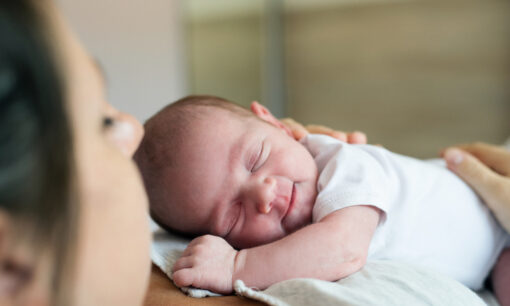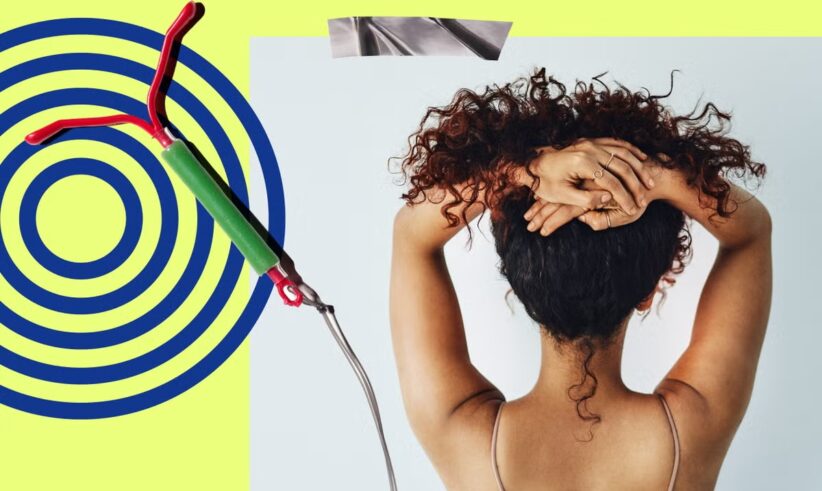I can hardly remember a time when I wasn’t on birth control.
Doctors put me on the pill at 16 to help manage the agonizingly heavy periods that had plagued me since I was 11 years old. For me, getting a prescription wasn’t as easy as walking into my doctor’s office and simply asking for one—it was an incredibly lengthy process. Because my mom suffered a stroke at 31—six months after starting birth control—I underwent a variety of blood tests to analyze the likelihood of the same thing happening to me. From there, I was put on the lowest possible hormone dose to regulate my periods.
So began my birth control journey.
More than a decade later, I decided I needed a form of birth control that wouldn’t require me to carry a pill pack or take a little capsule at the same time every day. My schedule was busy, and ever-changing, and I wanted to avoid the hassle. That meant that the best solution for me was the Kyleena IUD, and aside from downplaying the excruciating painful insertion (I passed out from the pain twice), my provider clearly explained the potential side effects that could result: irregular bleeding for the first few months, occasional breakouts from the hormonal shifts, weight gain, loss of libido. Sadly, the normal things women have to deal with to take control of their sexual health.
For the most part, I’ve had minimal complaints about my IUD. But there is one undisclosed side effect that I’m still coming to terms with: How it has affected my hair.
An unexpected twist
About two months after the insertion, my body hair—particularly in my pubic and underarm areas—began to grow thicker, darker, and much faster than before. To make things even weirder, these were areas where I’d gotten laser hair removal, so the stark change going hairless to, well, not, was staggering.
My body hair wasn’t the only thing to take a hit. Although it took a bit longer for me to notice, the hair on my head completely changed too. For 26 years my curl pattern was slightly wavy, but I watched with curiosity as type 3 ringlet curls formed along my hairline any time I stepped into a humid environment or let my hair air dry.
It took me nearly two years to put the pieces together and make the correlation between my new birth control and these hair changes, and after hours of research and conversations with OBGYNs, endocrinologists, dermatologists, and trichologists, it turns out hormonal birth control can change how your hair grows—but it’s rarely mentioned as a side effect.
The unexplored truth
This lack of understanding is partly due to the fact that hair growth changes are assessed by dermatologists, not OB/GYNs. “Most gynecologists are not fully aware of the hormonal effects on hair,” shares Angela Wilson, MD, board-certified OB/GYN at Montefiore Einstein Advanced Care in New York. (This also explains why many of my OB/GYN experts skirted around my questions on hair growth and spoke about hair loss instead).
Another reason is that hair changes due to hormonal birth control aren’t all that common. Just 5 percent of women with hormonal IUDs report hair loss, and there aren’t studies that can say for sure the percentage of women who experience extra growth, explains Sheeva Talebian, MD, a board-certified reproductive endocrinologist at CCRM Fertility Of New York.
These facts aside, there is some data to reference. “It’s well established that hormones affect both your hair growth cycle and your hair follicle structure, which determines if you have curly or straight hair,” says Jessie Cheung, MD, a board-certified dermatologist who specializes in hormones and proper sexual health practices. “Major hormone changes such as puberty and menopause can result in different hair patterns, textures, and density, and yes, birth control can too.”
While there isn’t one specific type of hormone that causes these changes, Dr. Wilson explains that progesterone and estrogen, two of the most common hormones found in both oral pills and IUDs, can affect hair growth and hair loss, though she notes that the effects are still poorly understood due to minimal research on women. What we do know is that “when hormones bind to the hair follicle, it can change the duration of a particular phase of the hair cycle, as well as potentially alter the structure of the hair follicle itself,” she says. When the shape of the follicle is changed, the texture changes as well.
Deeper dive
And what about my increased thickness? I could thank progestins for that. These synthetic forms of progesterone which are commonly found in birth control can cause major androgenic effects, leading to an increase in male characteristics, like thicker, darker hair, says Gretchen Friese, certified trichologist for Jillian LoPiano, a board-certified OB/GYN and chief health officer at



